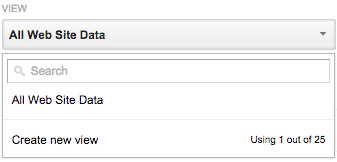Things to Remember when Creating Goals in Google Analytics
When creating goals in Google Analytics, there are a few things that we need to keep in mind.
Goals in Google Analytics can be extremely valuable. They allow us to identify where we are finding success, and when we dig down a little further, we learn a lot about our audience’s behavior. But when we create our goals in Google Analytics, there are a few things we need to remember.

Give Your Goal a Proper Name
This seems trivial, but it is an issue that so many marketers deal with on a regular basis. When you create a goal, give it a clear name that you can recognize at first glance, instead of something generic like ‘Goal 1’.
This might not seem like a major issue at first, but as you begin creating new goals and your list grows, you will notice that it becomes much more difficult to track which goals are which. Eventually, when trying to edit your goals, you will have to sift through them one by one in order to find the goal you are trying to change, and the time this takes is simply not worth skipping this small detail.
Set Up a New View
The last thing you want to do is learn the hard way that Google does not back up your data. Contrary to what you might think, there is no secret archive of information should you make a mistake and lose some of your data. It is simply gone. So, when making changes and creating goals, do so in a new View.

Creating a View is simple. Go to your Admin dashboard, scroll to the absolute right, open the dropdown menu and create a new view. It’s there that you should do all of your goal testing. Figure out what goal composition you would like to work with, and once you have found it, apply it to your primary dashboard.
Consider Assigning Monetary Value
Just because your goal is not related to a purchase, and you may not even have an ecommerce website, it does not mean that you shouldn’t be assigning monetary values to certain conversions.

Consider this simple example: you create a goal that registers a conversion every time someone signs up for your newsletter. If the lifetime value of a customer is a nice, round $1000, and you know that you can convert exactly 10% of your newsletter subscribers, then you can assign a value to each conversion of $100. Of course, this makes life fairly easy, but this is an example of how you should start thinking about your goals in monetary terms.
Avoid Generic Goals
Creating a very broad goal will not necessarily help you improve your online operations. Of course, if you are trying to track for purchases, then you’ll create goals with those parameters. But if you are trying to leverage goals in an effort to learn more about your audience, get granular.
Instead of simply creating a goal that tracks a certain number of pages visited, include funnels and filters, and separate your goal in a new view in order to truly dig into the data you are seeing. You have the potential to create up to 25 views with basic Google Analytics, that means you can segment your data significantly and really learn about your audience in great detail.
Verify Your Goals
When creating a goal, you will notice that there is a small option at the bottom of the screen to verify your goal. This is a great practice and one that you should be familiar with when creating your goals.
![]()
By verifying your goal, you are able to see how many conversions there have been in the past seven days. If you were to create a goal that simply didn’t have any conversions, you would think that there was something wrong with your website or your marketing. The reality might be that you made a mistake when creating your goal (e.g. typing in 30 pages visited instead of 3) or your goal simply didn’t reflect your audience’s activity. All that can be avoided by verifying the goal before you get started.






